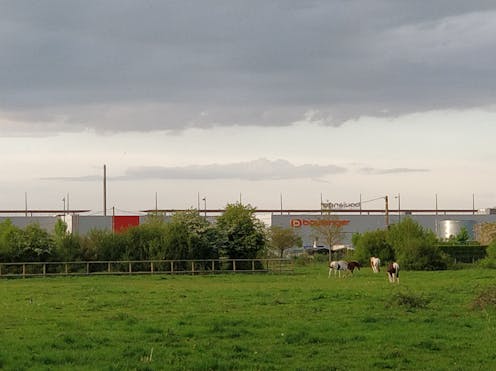
On 11 September, France’s Minister for Ecological Transition and Territorial Cohesion, Christopher Béchu, and Olivia Grégoire, the Minister Delegate for Small and Medium-sized Enterprises, Trade, Crafts, and Tourism, announced a national programme to rethink the country’s commercial zones.
Often situated at the edge of towns, these zones are major consumer hubs. France counts no less than 1,500 of them, equivalent to an area of 500 km2, or 5 times the size of Paris. 72% of spending by French households takes place within them, according to the country’s economy ministry.
Associated with the rule of the car and overconsumption, a way of life now judged obsolete by urban and district planning professionals, these zones are also an inheritance of the Trente Glorieuses, the thirty-year period of economic growth between 1945 and 1975, and so form a collective memory.
However, the climate crisis is increasingly putting their existence into question, as calls grow to stop building new zones and to transform existing ones, including for residential purposes. If that is to happen, we French people will have to learn to look at what are now often commercial ghettos under a new light. Luckily, the country’s artists and writers have started that job for us.
“Ugly France”: a subjective perspective
Since the government announcement, the expression “Ugly France” has reappeared in public discourse. First used in the pages of the cultural magazine Télérama in 2010, the expression encapsulates the forms that urban spread takes: road infrastructure, commercial zones and housing developments.
Critics see ugliness, banality, boredom, and unhappiness. Their residents are seen as exiles. Never mind that a third of the population resides in these districts, in a mosaic of different socio-economic classes and diverse and changing living arrangements. What is more, the “franchised town”, as the sociologist David Mangin put it in 2003, is a reality that concerns the suburbs as much as historic towns. The sheer number of ads in all forms in the central areas of the capital constitute the perfect example.
But other authors are also asking us to consider these spaces anew. In 2011, Éric Chauvier opposed these criticisms by publishing the essay Against Télérama, taking aim at the “class judgement” of the Parisian magazine. The writer Annie Ernaux, for her part, wrote an account of her sensorial experience of large supermarkets in the opus Look at the lights my love. She has since been awarded the Nobel Prize for Literature.
The philosopher Alain Roger informs us that we can appreciate a landscape with art as an intermediary. Artists, and photographers in particular, have produced much work that can enable us to appreciate this aspect of commercial zones. Just as Robert Venturi and Denise Scott Brown became aware of the visual and cultural qualities of the commercial boulevards of Las Vegas, are we not also able to change our perception of those commercial zones on the outskirts of French towns?
When artistic production meets town planning
The fascination of photographers for suburban spaces first manifested itself during the Photographic Project of DATAR (Interministerial Delegation for Urban Planning and Regional Attractivity). DATAR was created in 1963 with the aim of documenting the national politics of urban planning. In 1984, Bernard Latarjet and François Hers founded the project in order to “represent the French landscape of the 1980s” and to “recreate a culture of landscapes”.
Photographers captured the transformation of coastal areas, rural and provincial zones; they bore witness to the effects of spreading urbanisation; and captured a disappearing countryside, or at least, one that had been irremediably transformed; they explored infrastructure and landscapes that did not cease to change and showed the men and women who occupied these spaces.
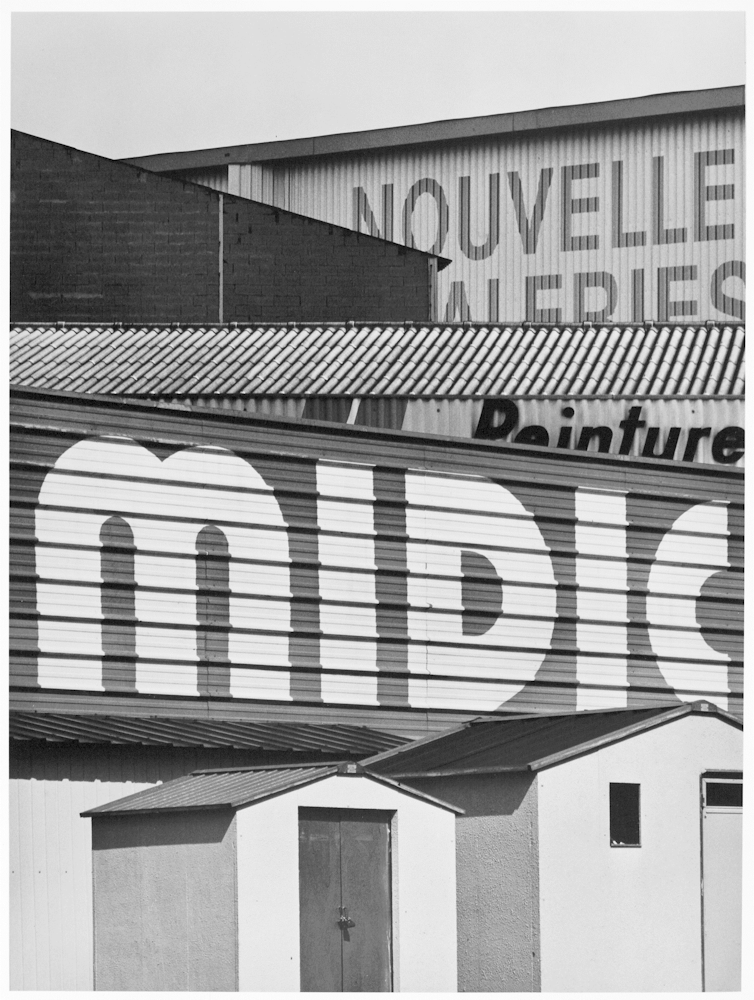
Unveiled to the public for the first time at the end of 1985, the photography of DATAR were published widely in the press. However, the philosopher Michel Gerrin’s opinion that “Miracle! We have rediscovered French landscapes!”, was an exception. The public at the time did not see in these photographs the desire for renewal but rather a testament to these landscapes’ changing nature.
These images tell the story of France as a country undergoing profound change: the story of a territory conquered by a flux of circulation and energy; where nature (never wildlife), habitat, and industry are superimposed and intertwined; where the functionality of the State that delivered the Trente Glorieuses coexists with the proliferation of the individual habitat, and where the public space is peopled by images and signs.
New stories
Following the DATAR model, photography projects and independent commissions – such as ARN, the Atlas of Natural Regions – show portraits of landscapes where the sensorial aspect never comes at the cost of the urban realities.
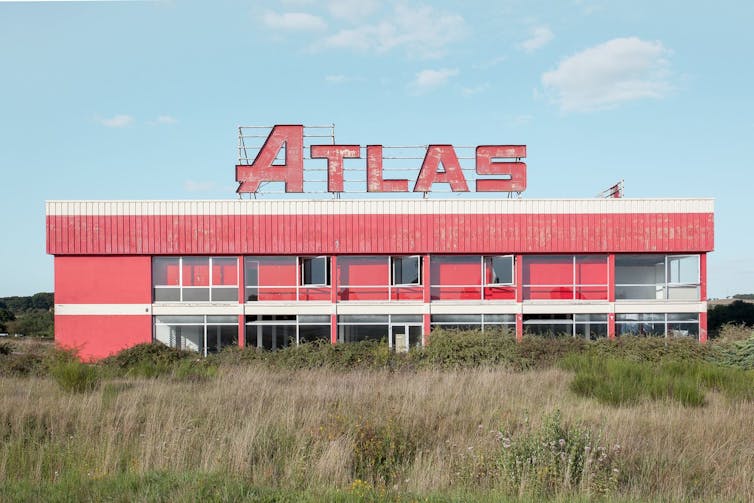
Initiated by the Forum Vies Mobiles (a mobility research unit), “The lives we lead” seeks to capture the diversity of contemporary ways of life in France. The photography series capture stories, following individuals from all backgrounds, in different regions. In particular, they examine the vital role of the car in everyday life, the main method of transport, an instrument of work, or an object of pride, and reveal “our dependence on carbon energy”. Exhibited at the International City of the Arts in 2022, these images were displayed side by side statistics, underlining the fact that today 70% of journeys in France are done by car and that, in 2018, 85% of households had a car.
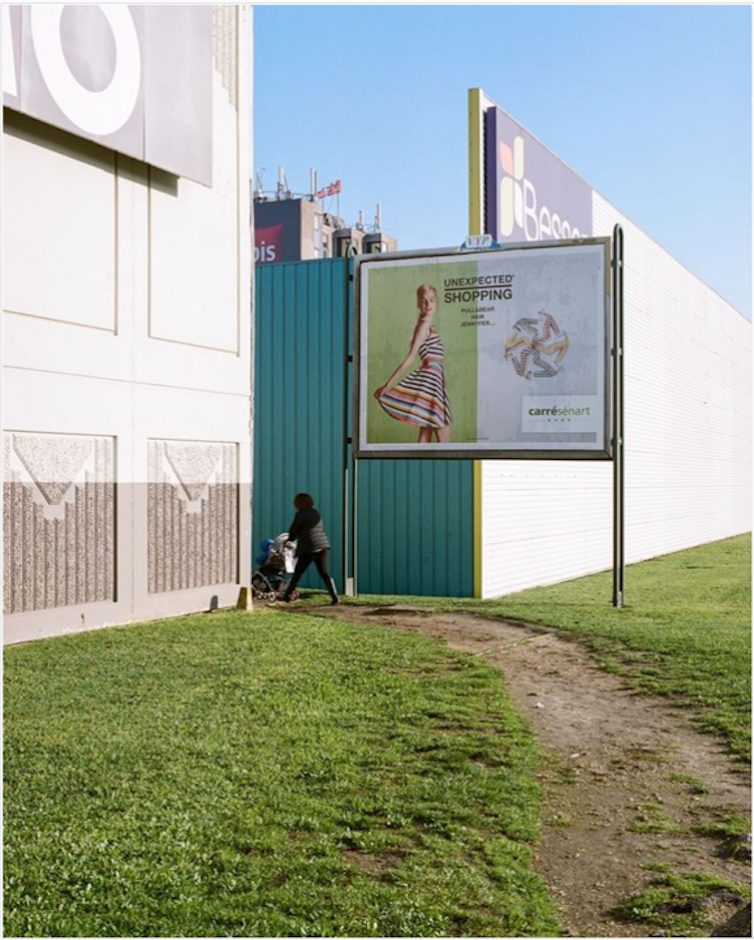
Another independent project, launched in 2020, “France(s), a fluid land” is set apart by its ambition to take up the baton of DATAR, and at the same time liberate itself from the constraints of a commission. It is about exploring a territory in metamorphosis, from different aspects, at once material and emotional. Far from simply documenting, the project focuses on narration, featuring the inhabitants of suburban zones with vivid evocative power.
The aesthetic of contrast
It is difficult to establish an exhaustive list of photographers who have been inspired by the suburban. Like Raymond Depardon who participated in the DATAR mission and captured the effects of urban spread on the countryside, then published a book The of Raymond Depardon nearly twenty years later, many photographers have engaged in a contemplation of “Suburban France.”
Their choice of subjects and the framing influences our perception of these spaces. Their gaze is never neutral. They are animated by nostalgia, off-beat humour, or are inspired by cinematic influences. Commercial zones become stories, and their visual qualities, full of contrasts, are sublimated by the art.
“Hexagone : le paysage fabriqué” de Jurgen Nefzger montre des paysages périurbains dotés points de repères et de monumentalité. Les chefs-d’œuvre de l’architecture post-moderne, structurent l'espace au même titre que les fameux pastiches d’architecture vernaculaire délivrés partout à l’identique par les chaînes de restauration.
Jurgen Nefzger’s “The Hexagon : a manufactured landscape” shows suburban landscapes endowed with landmarks and given a monumental quality. Structure is given either to the space by the masterpieces of post-modern architecture or similarly by the famous pastiches of vernacular architecture, seen in restaurant chains that are always identical wherever you are.
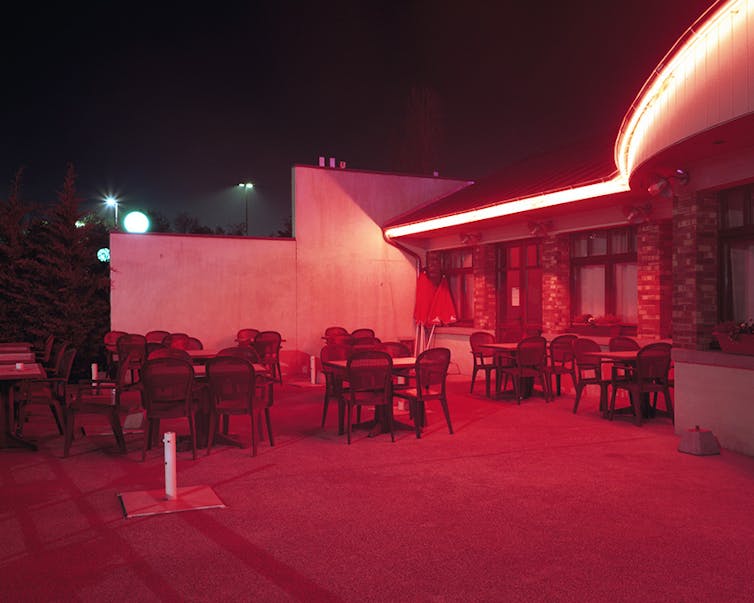
Julien Roche’s photo series “Paradise Lost” plays with repetition, while in the series “On the Hunt for the Last of the Wild Men”, Antoine Séguin focuses on the differences in scale between the Homo suburbianus and his environment.
“Rodeo 3” by Xavier Lours lingers over the nocturnal life of Plan-de-Campagne, a commercial zone created in 1960 in the suburbs of Marseille, the biggest in France, and that has been the focus of many photographers since the DATAR project.
While Raphaël Bourelly’s “Motorway in the Sun” series celebrates the neons and the play of light.
Public bodies have been interested in representing commercial zones as landscapes; these photography projects have won prizes in the competition “A look at these zones of economic activity” sponsored by PUCA (Plan Urbanisme Construction Architecture) – an interministerial service created in 1998 to raise awareness about these regions and the towns and to shine a light on public policy.

The photography of Stéphanie Lacombe, for her part, involves a change of scale and focus, She looks less at the landscape of these commercial zones and more at its appropriation by individuals. Her series ‘Hyperlife’ reveal the social relationships that play out on the carpark of the Intermarché supermarket of Saint-Erme (Hauts-de-France). The exhibition of the work in the carpark in question was a fascinating subversion of the zone’s function and a way to value it differently and validate it fully as a space for the living.
Through this body of work, commercial zones are not simply seen as functional spaces or hubs for consumption, but reveal themselves as zones where different layers superimpose on themselves, as do borders and gaps. Starting with these representations, it is vital to recognise and preserve these existing practices that may not conform to a consumerist outlook. They must not be erased.
Translation from French into English by Fleur Macdonald
Elodie Bitsindou does not work for, consult, own shares in or receive funding from any company or organization that would benefit from this article, and has disclosed no relevant affiliations beyond their academic appointment.
This article was originally published on The Conversation. Read the original article.







